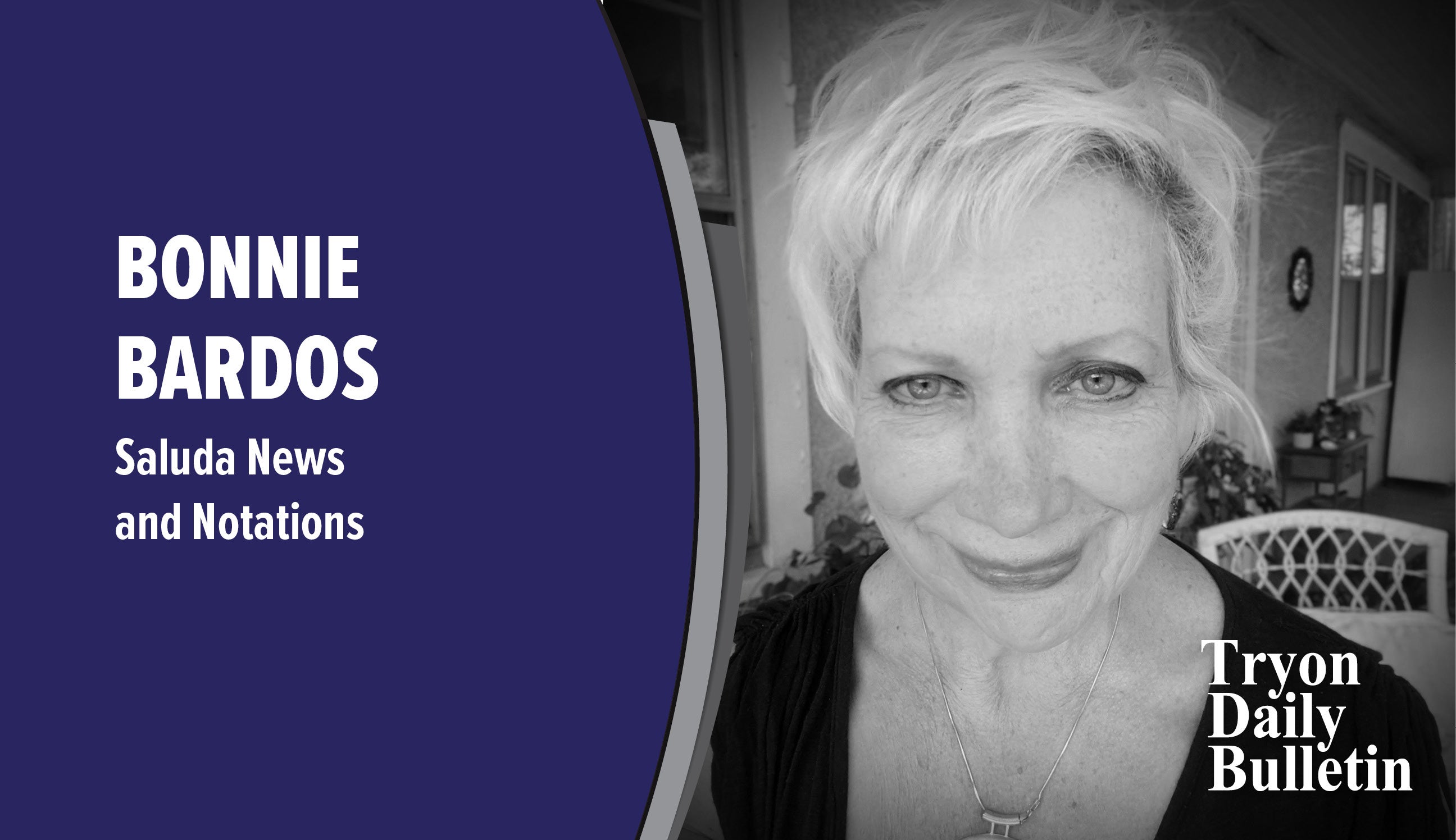Art comes alive in the Old Chicken House
Published 4:24 pm Friday, August 8, 2014
By Mark Schmerling
As with many artists, Saluda’s Doug Honeycutt has evolved, and refined his skills. And, as many others, that talent showed at an early age.
How early?
“Probably when I was five or six,” he recalled, his aunt, at a gathering with young Doug’s parents, noticed one of his early watercolors. His aunt “really bragged on it,” and told his parents that he should be an artist.
“I can remember it like it was yesterday,” Honeycutt remembered proudly. Now an accomplished painter and sculptor, Honeycutt follows the path of the artist who wants to share his work with the world, for others’ satisfaction, and his own.
Honeycutt is one of several artists with studio space at the Old Chicken House, (143 Mountain Page Road), just feet south of Saluda, in Henderson County.
“Doug is in here every day,” said Ruth Anderson, who operates the facility. “That’s what it takes when you do what you ought to be doing.”
One or two of Honeycutt’s early abstract expressions have survived. Though he studied art in high school (under Ford McDonald, who continues to inspire him. “I took advantage of every time he offered a workshop,” Honeycutt said), he became a full-time artist literally by accident, though that kind of talent and dedication couldn’t lie dormant forever.
Though McDonald “was probably the biggest influence on my painting career,” Honeycutt, a Shelby native, enrolled in the Cleveland (Ohio) Technical Institute, and majored in mechanical engineering. Actually, McDonald had recommended the college to Honeycutt.
“I was a land surveyor for thirty-five years,” Honeycutt noted. For about nine years in his twenties and thirties, Honeycutt also enjoyed a moderately successful art career, but after that, he put it on the shelf. After thirty-five years as a surveyor, Honeycutt was injured and disabled from a fall on the job. He asked himself then, “‘what can I do with myself to be creative?’ I decided I was going to paint.”
Actually, Honeycutt’s surveying experience was helpful when he sought serpentine from which to sculpt. He knew where to look in a forested area, and found the desired material.
Rocks from that site “allowed me to be creative for four or five years.” He’d never envisioned himself a sculptor. “I had no idea that I could do sculpture,” he recalled. That was, until someone gave him a piece of serpentine– actually several pieces.
“Right out of my head, I carved an Egyptian ram.” That led to a great deal of encouragement by others for him to do more. Sculpting is nothing new; Honeycutt has practiced it since 1989, though he plans to expand his wok to include marble, much of which is found in Georgia.
When he was a young man, Honeycutt’s family “did not believe I could make a living (as an artist), or even have art in my life as a hobby. They felt that was something old ladies did when they retired.” Ironically, his mother, a weaver who had majored in botany and art, formerly produced art in the Old Chicken House. “She and I had a kind of rivalry when it came to art work,” Honeycutt admitted. Ruth Anderson’s acquaintance with Honeycutt’s mother gave him “a foot in the door” of the studio.
An impressionistic painter, who works with acrylics and sometimes watercolors, Honeycutt is inspired by actual scenes, photographs of which he uses as a basis for much of his work. Several months ago, he took up pointillism, painting with closely spaced dots, a form developed by impressionist painters of the past
Impressionist painters Pierre-Auguste Renoir and Claude Monet are constant influences and mentors. “Renoir is one of my mentors,” Honeycutt said, though he is careful to work in his own style, and not duplicate the work of others. “I don’t compare my work to anybody else’s. I try to develop my own style which is recognizable.” To do that, he devotes some seven hours each day to working in the studio. “This is my structured work, he stressed. “I like a little structure.”
That’s vital, as one of his paintings might take twenty-five to thirty hours of work, and some sculptures might require months.
When does Honeycutt consider a painting finished?
“If I sign my name on it,” he said, “I’m satisfied.” For sculptures, it “when I get the polish effect finished.” Regardless of the time involved in sculpting, Honeycutt emphasized, “My favorite thing to do in the world is to work at the beach, to sculpt.” There he enjoys the input and attention from, those who pass by. In fact, he feels that beach atmosphere should exist in every town, possibly as town squares, which were formally more common.
Honeycutt loves when people who admit that they know little of art, nonetheless tell him, “‘But, I like that!’”
Much of Honeycutt’s philosophy is based on John Rodin, who emphasized that everything a person uses each day should be art, that the poorest among us should be able to afford art.
Being able to work in an inspiring location has helped Honeycutt, whose parents moved to Polk County (Lake Lanier) in 1974. He’s been at the Old Chicken House for three years. “This is my home,” he said. “I love it. Ruth has gone way beyond what most people would do . . . to promote a warm working space. She’s been a really big supporter.” Honeycutt notes, “I’m really lucky to have this space.” He currently has several pieces of his art displayed in the Saluda Grade Cafe. He would like to exhibit and market in Charleston (SC), and has a disk showing his sculpture.
Though commercial success is welcome Honeycutt receives other rewards and has other goals. “I want to share my art work with other people. It’s not so important to sell it as to share it. Art is what I have to share with other people.”


